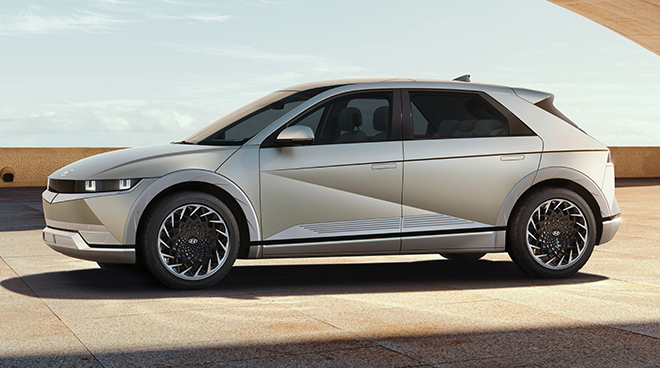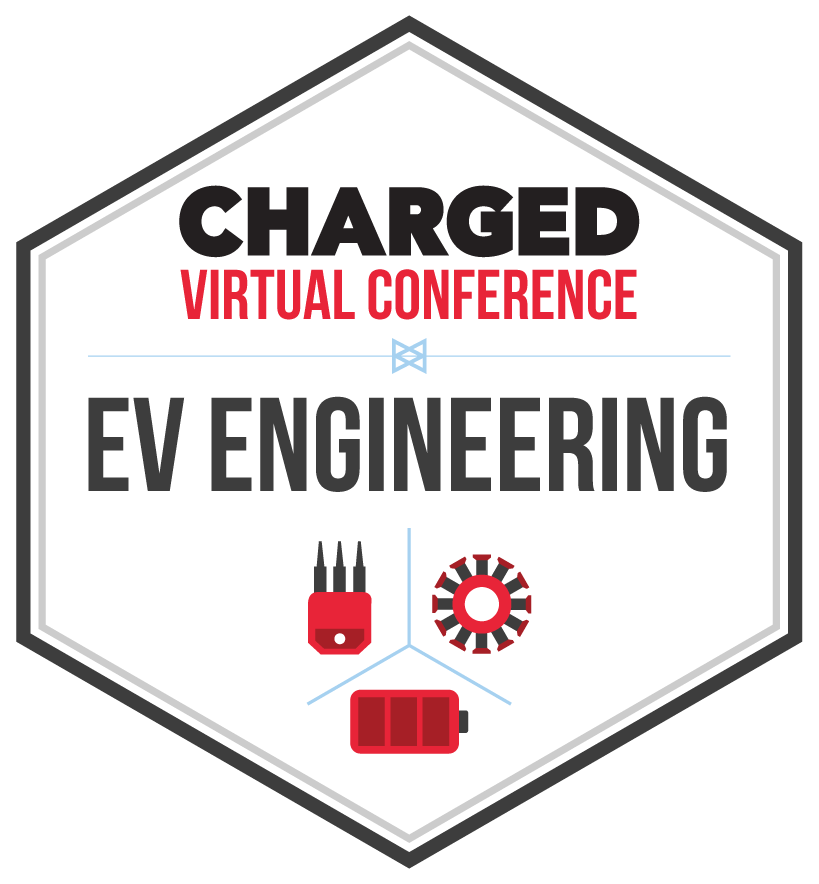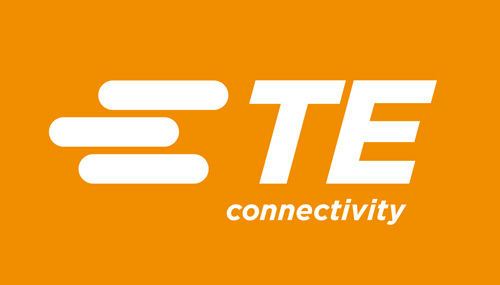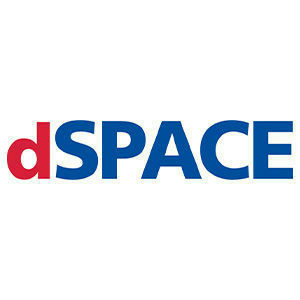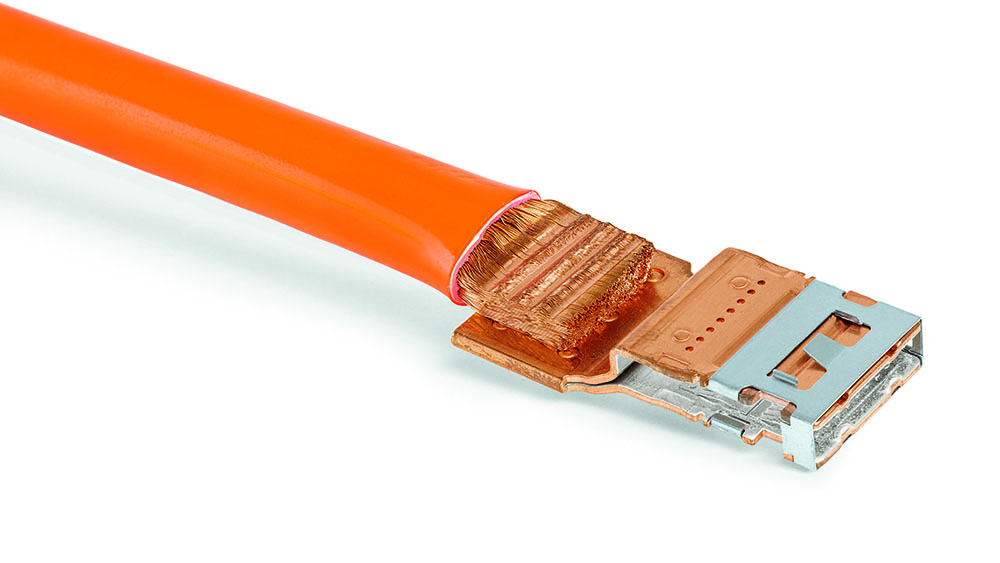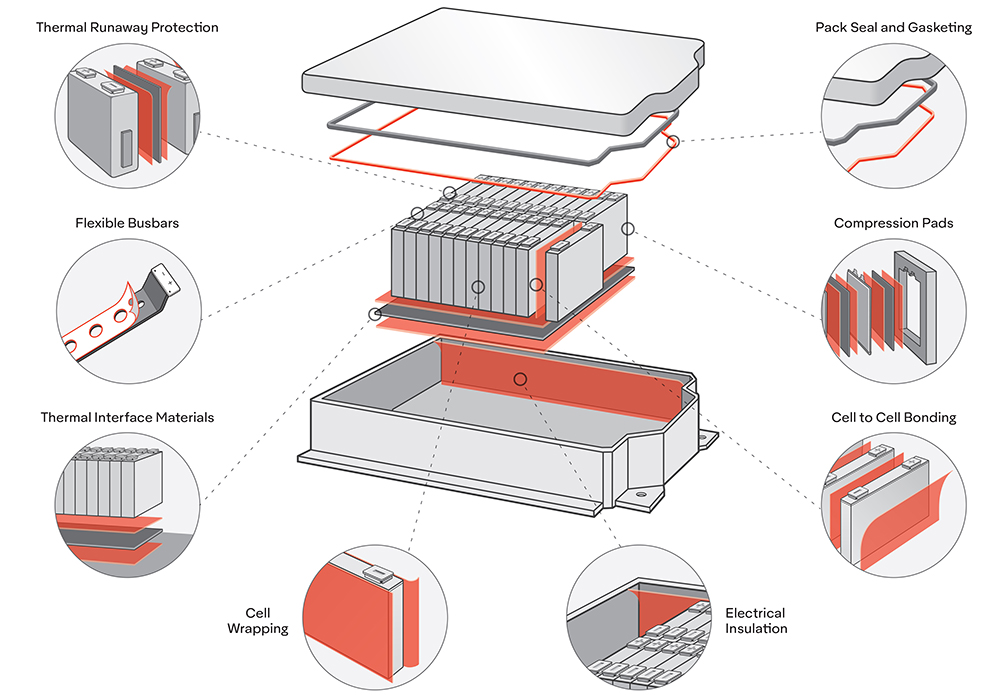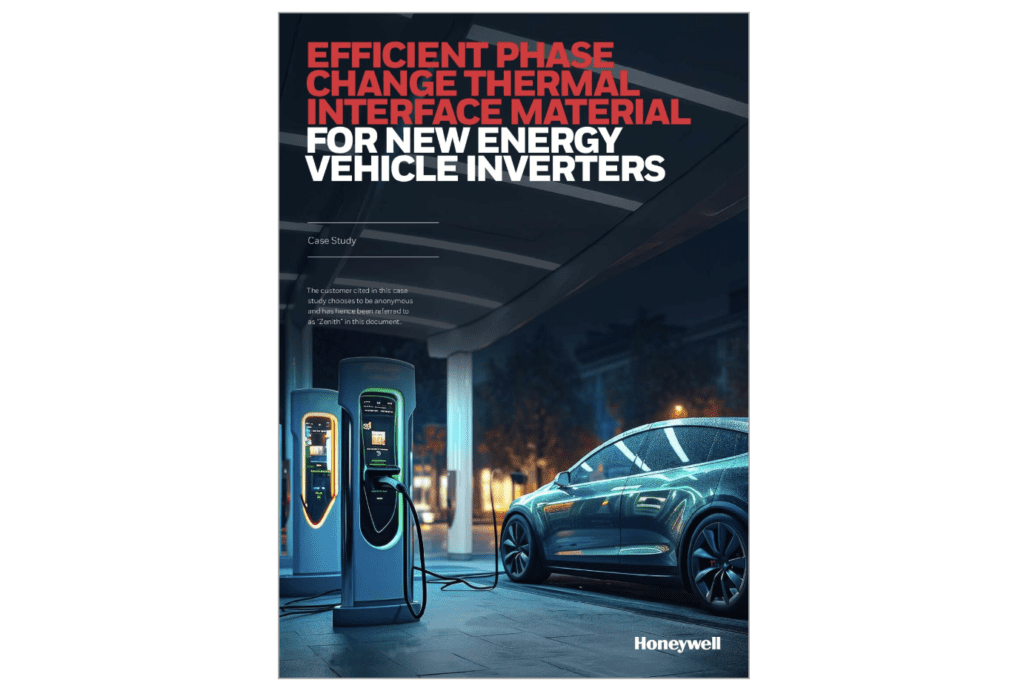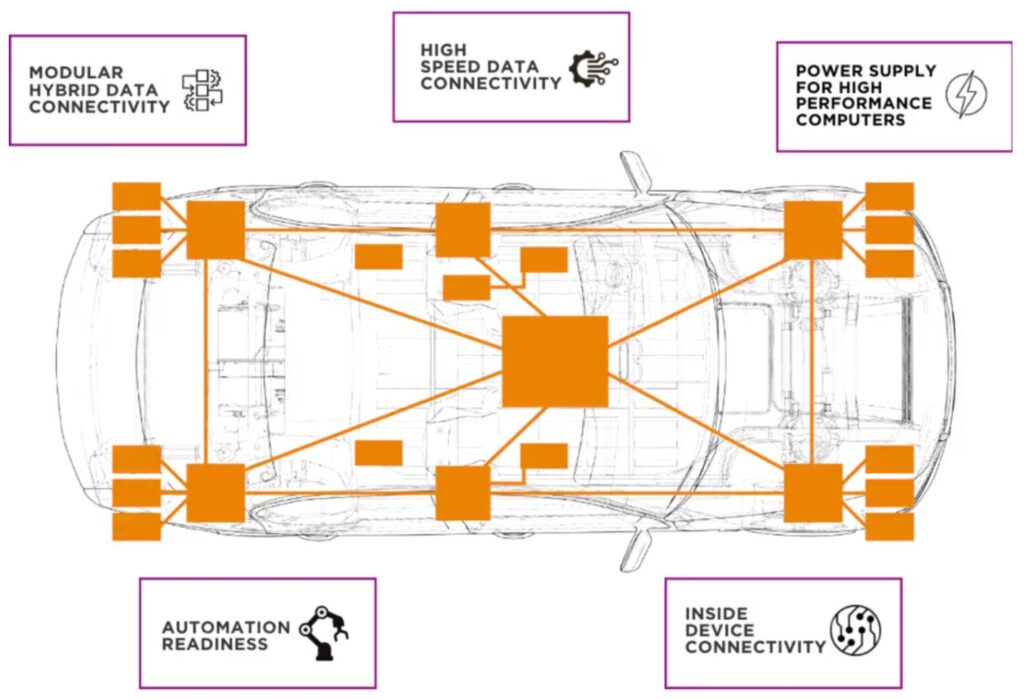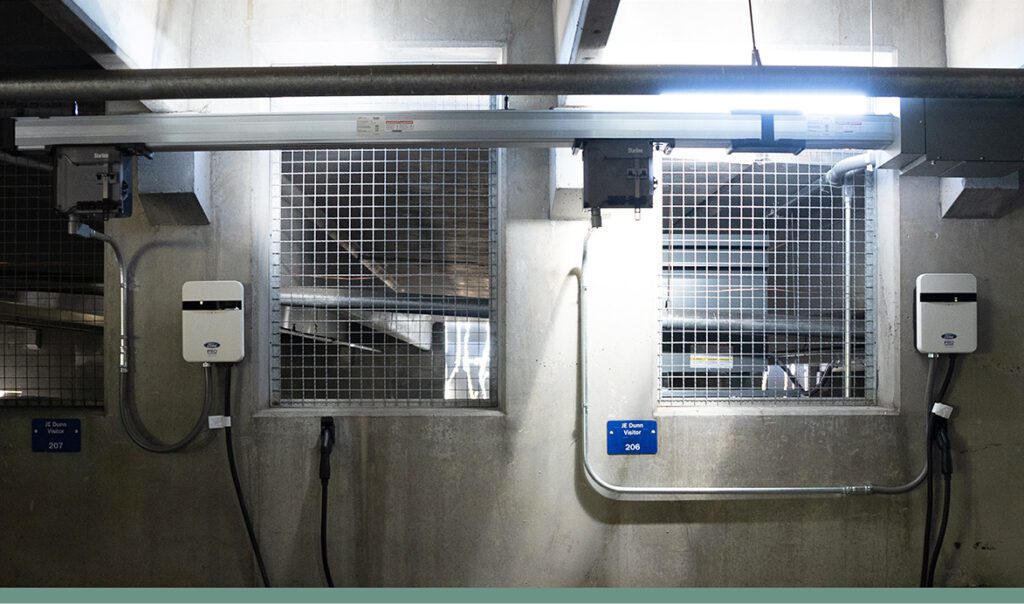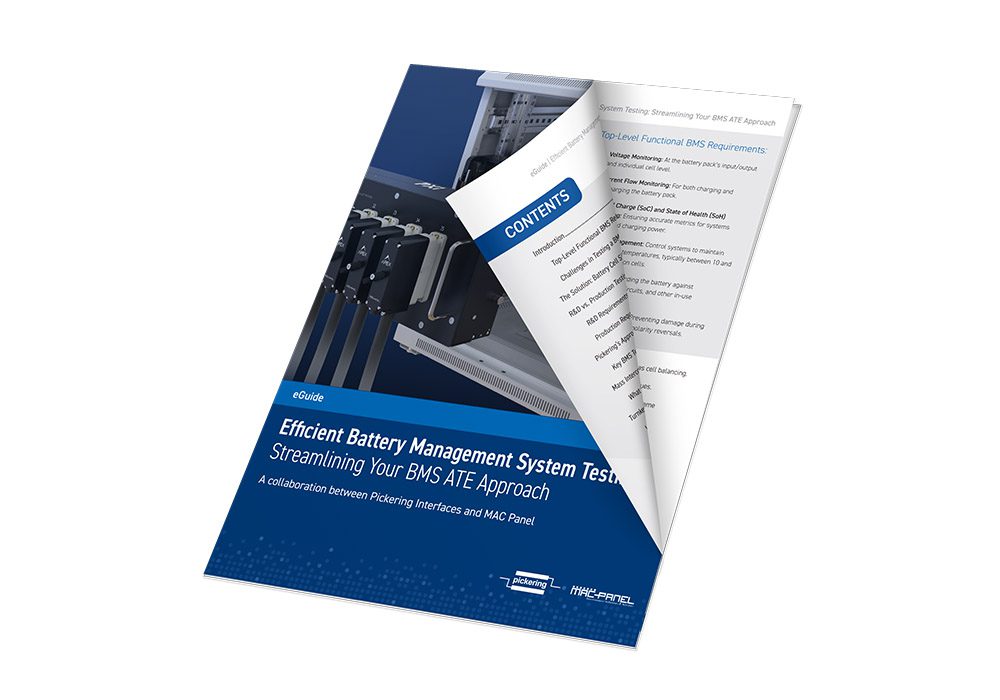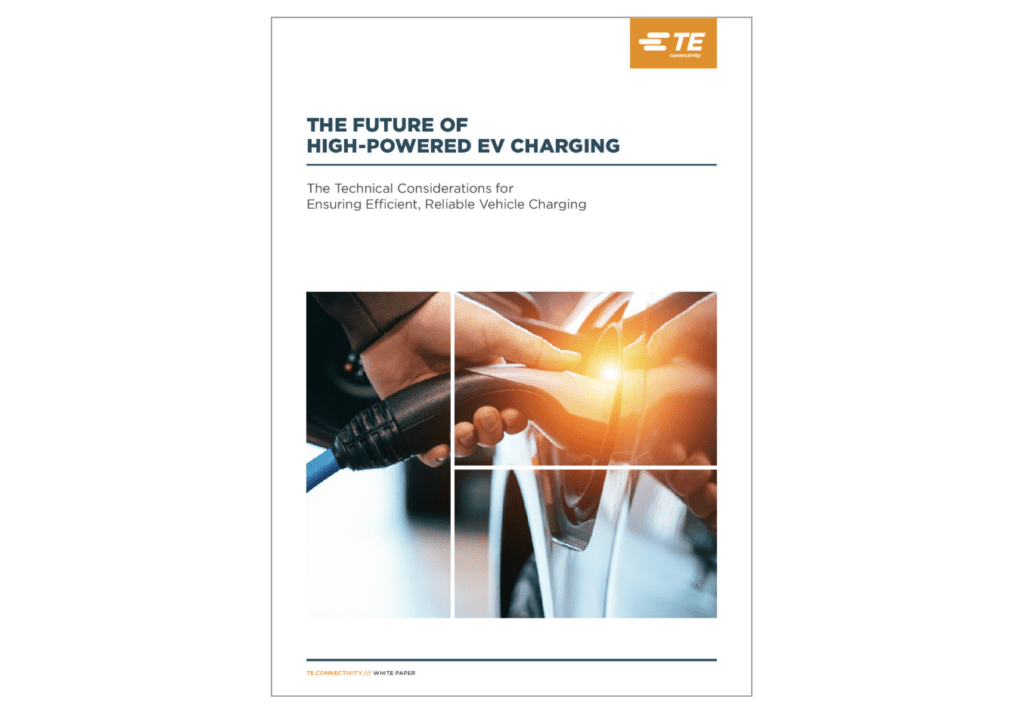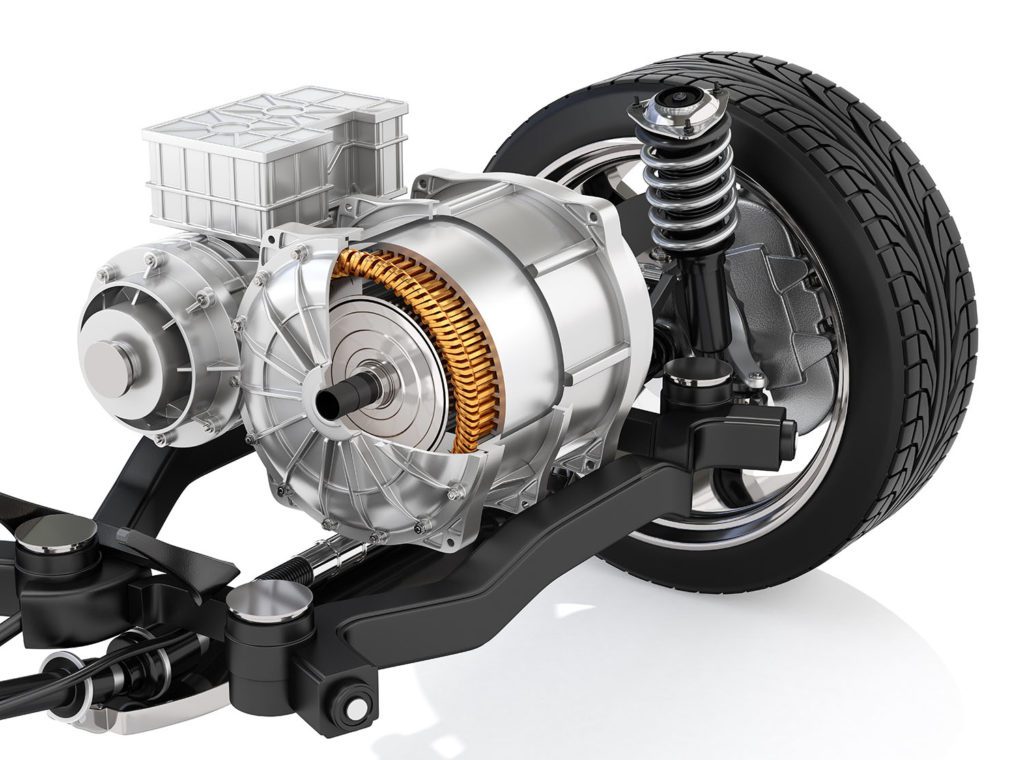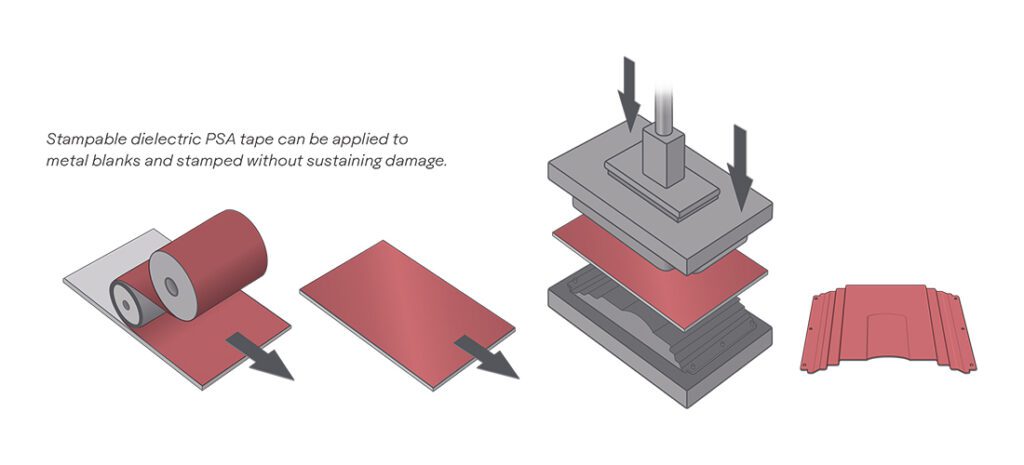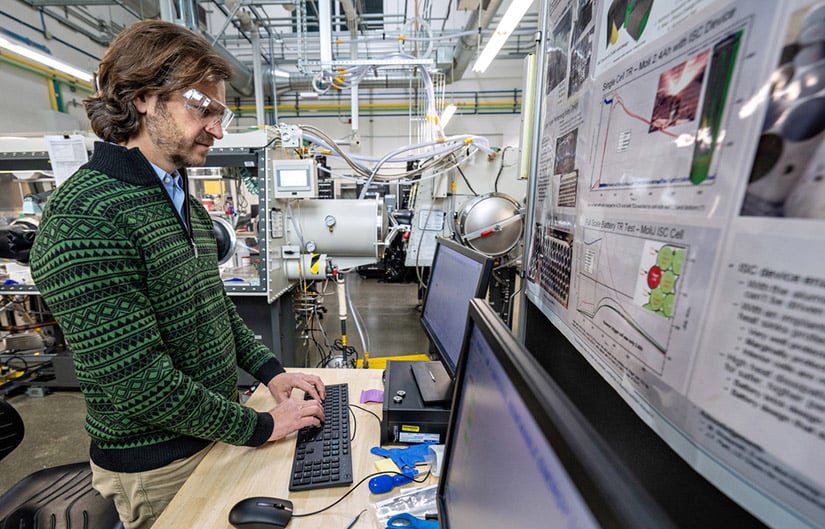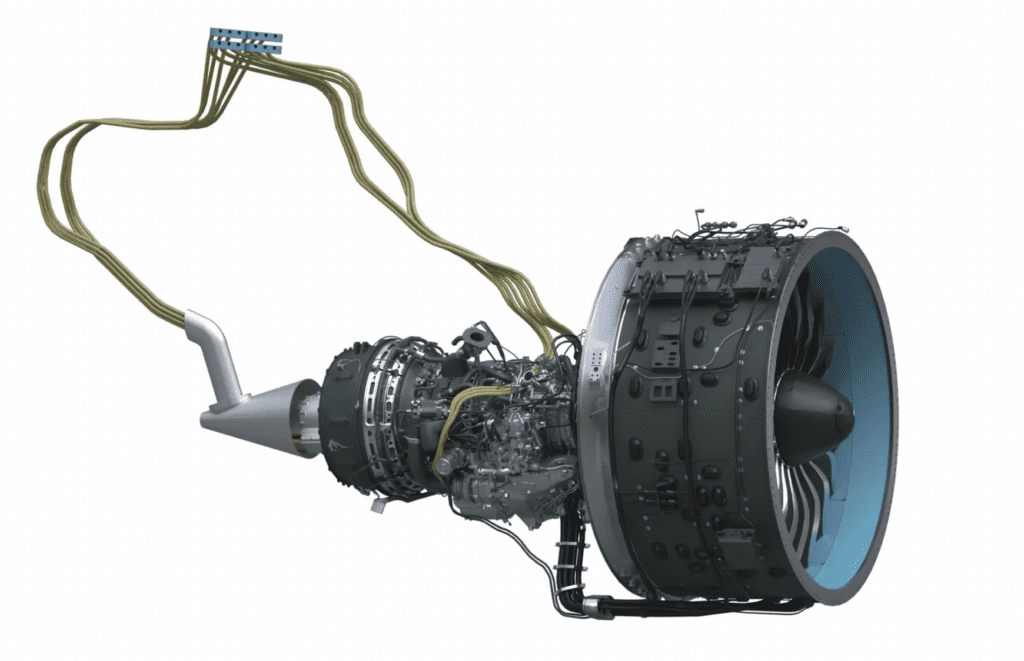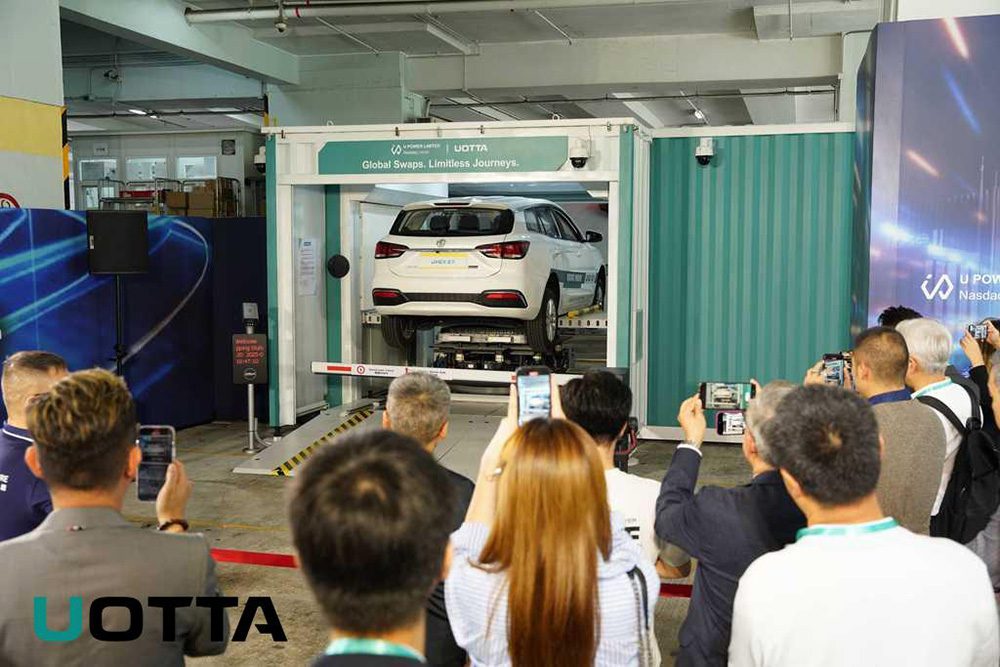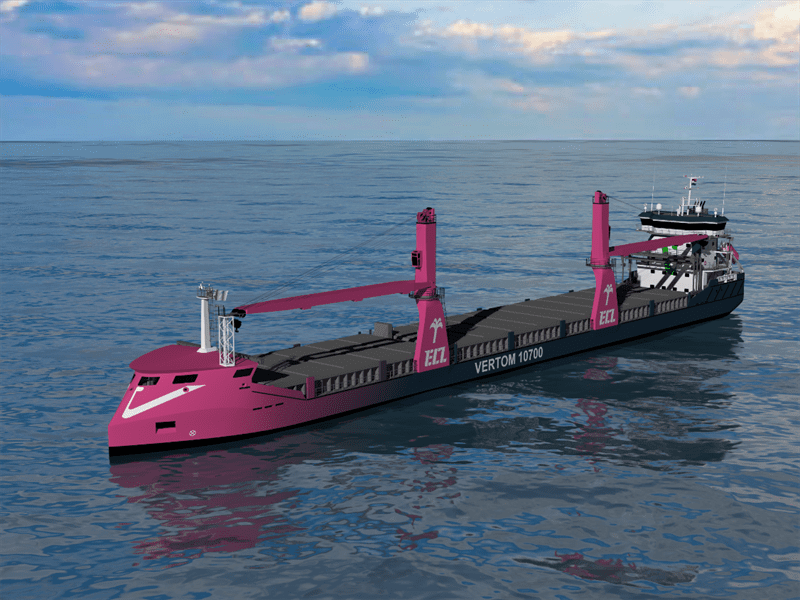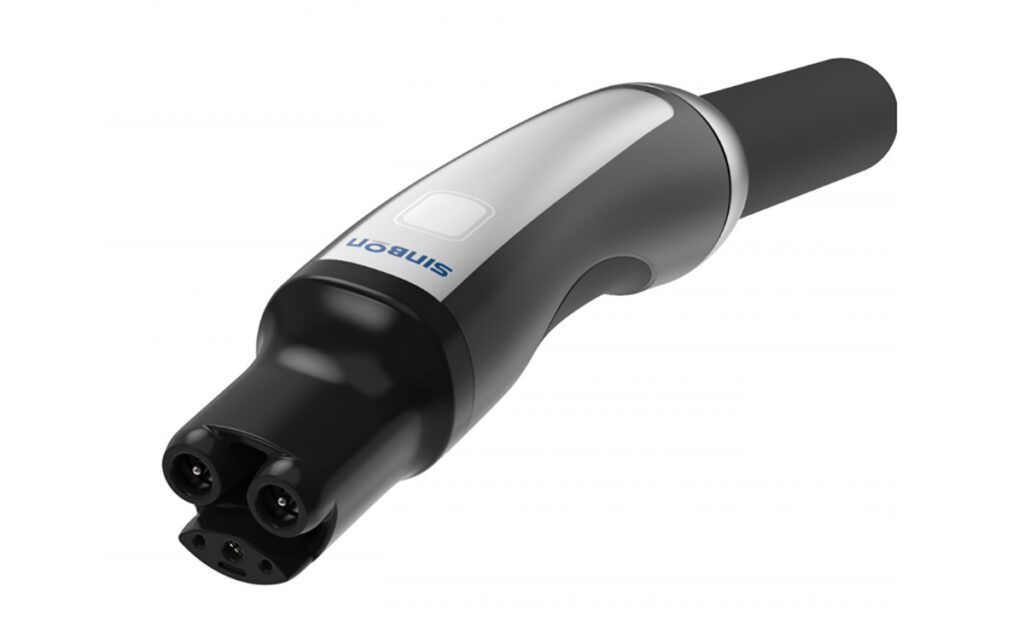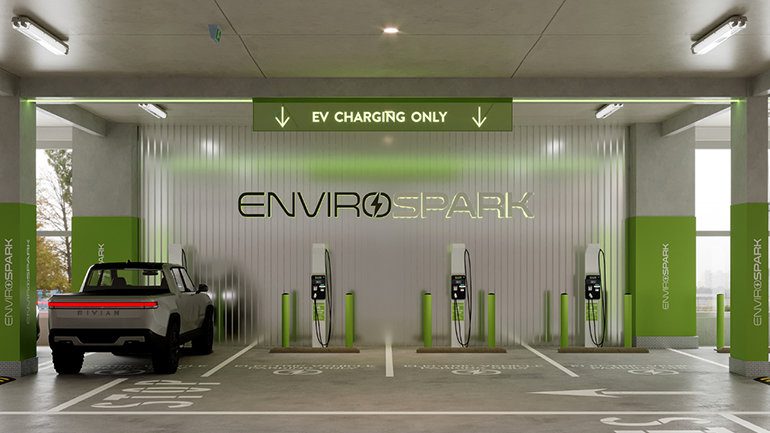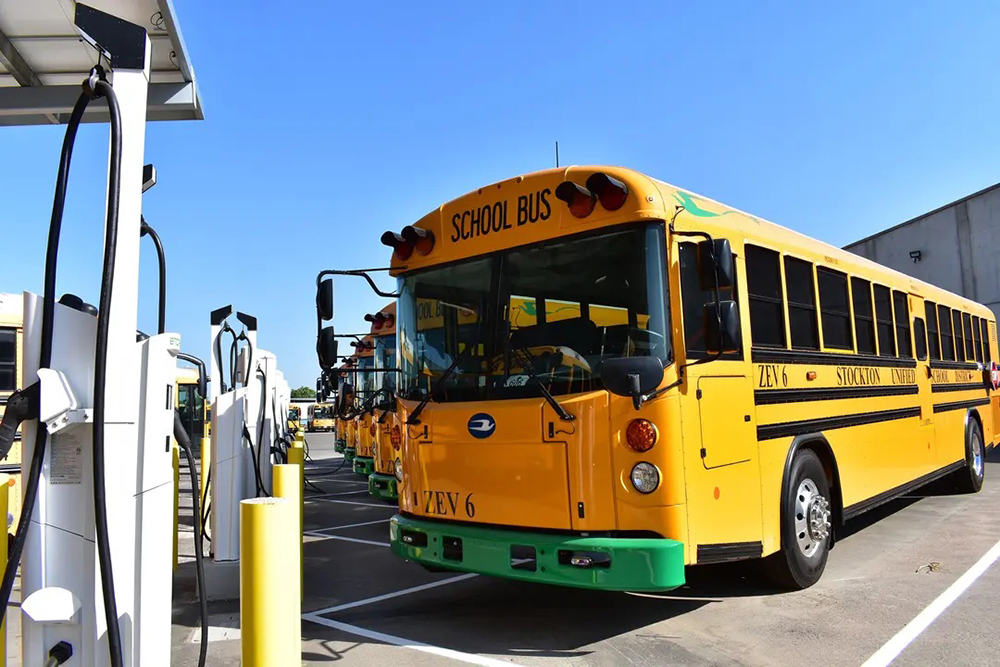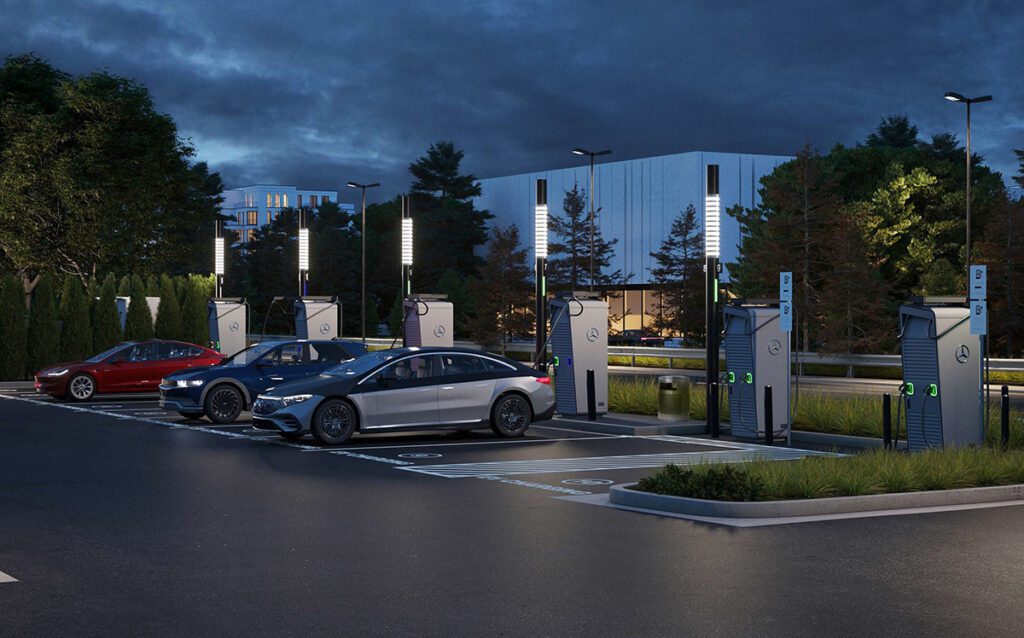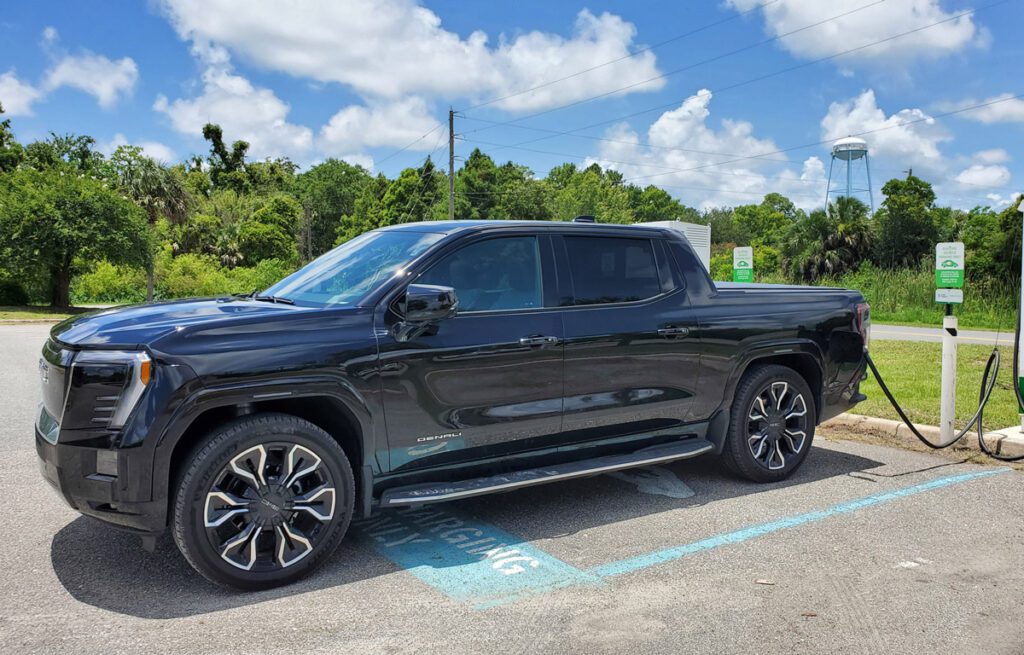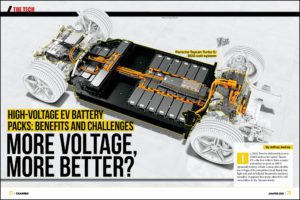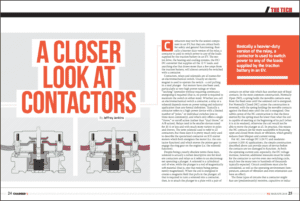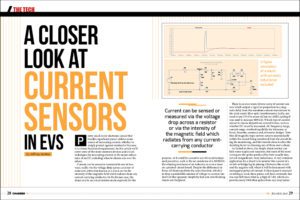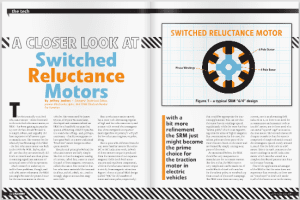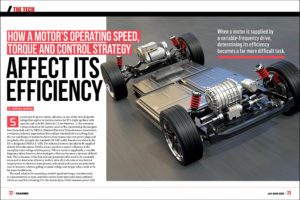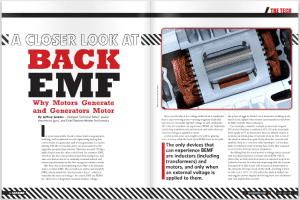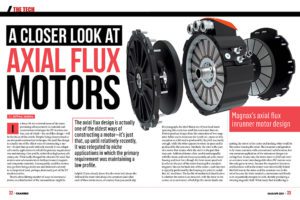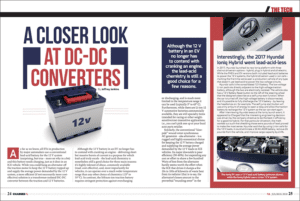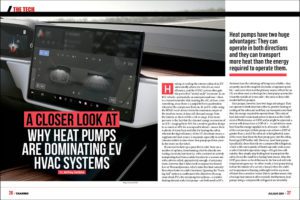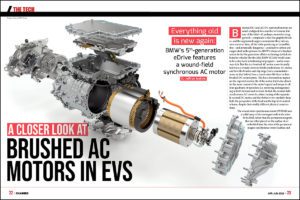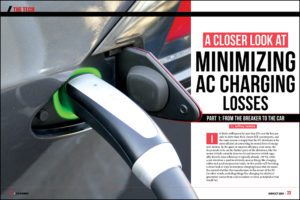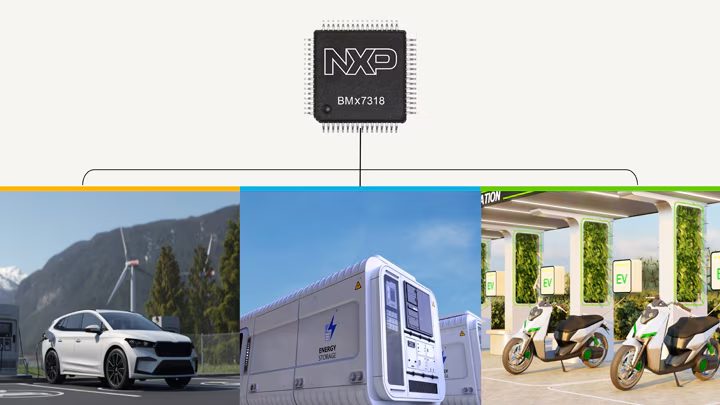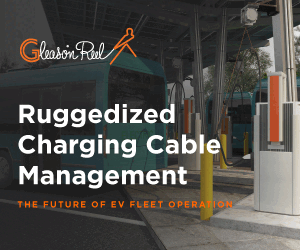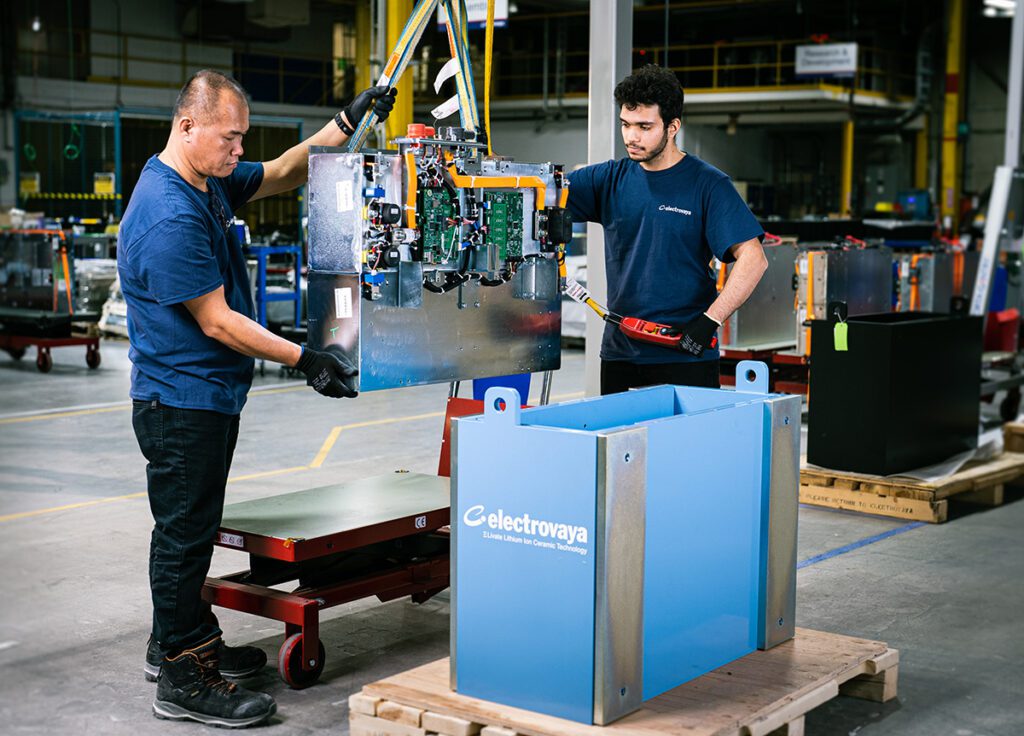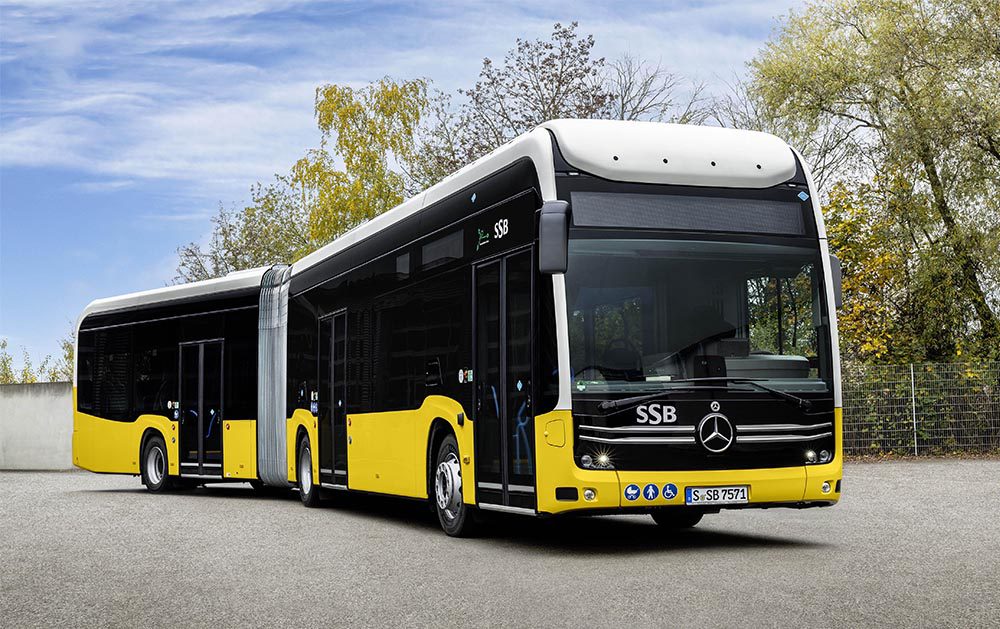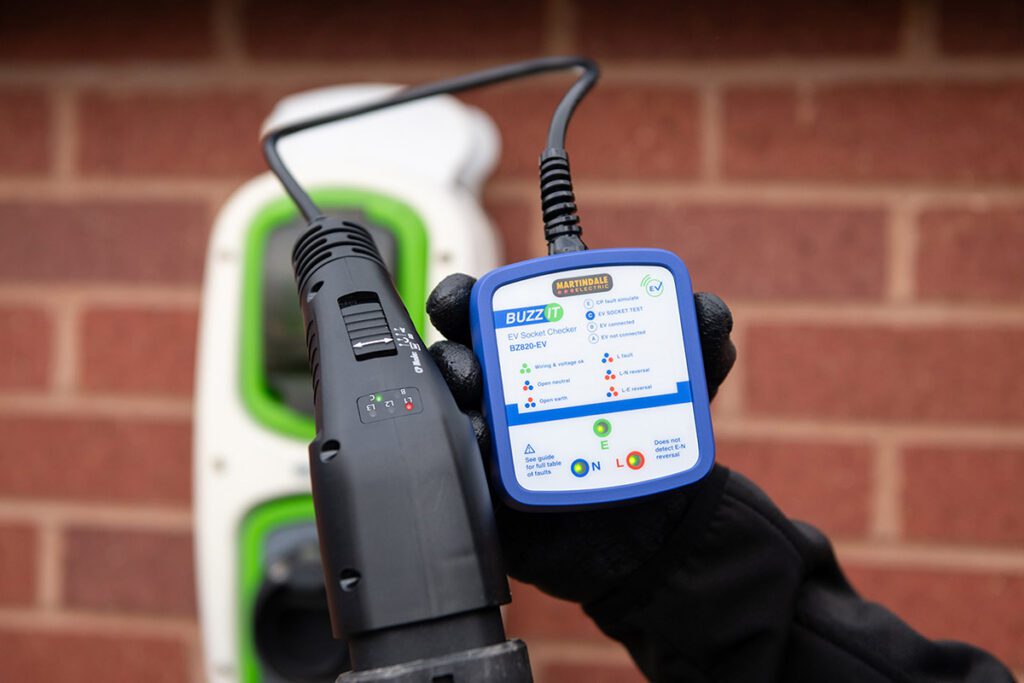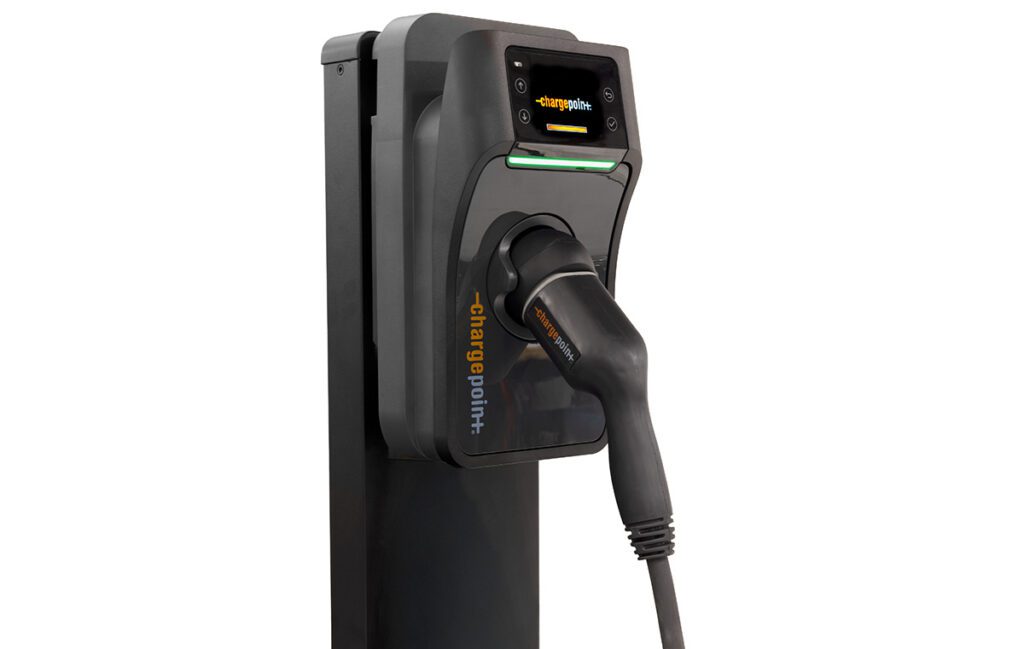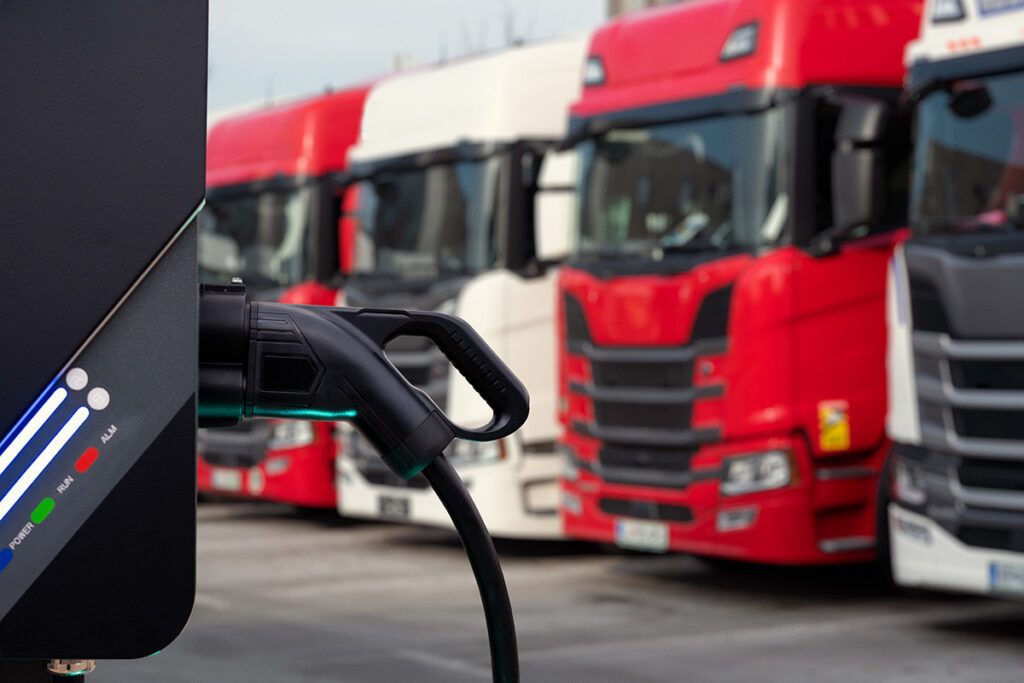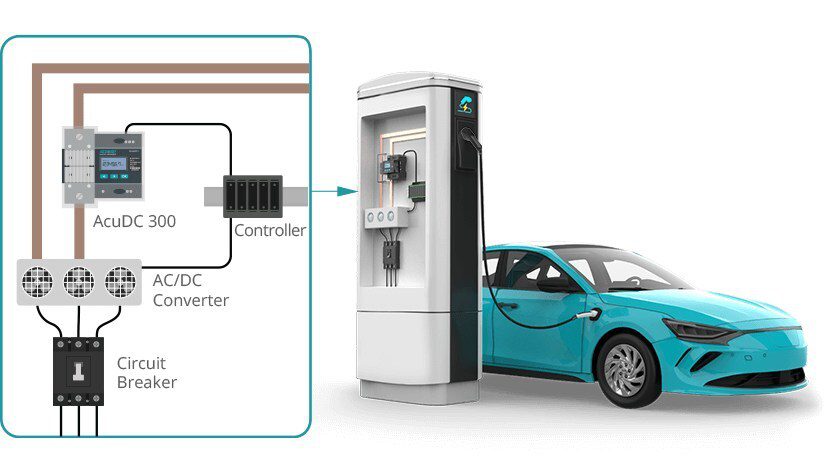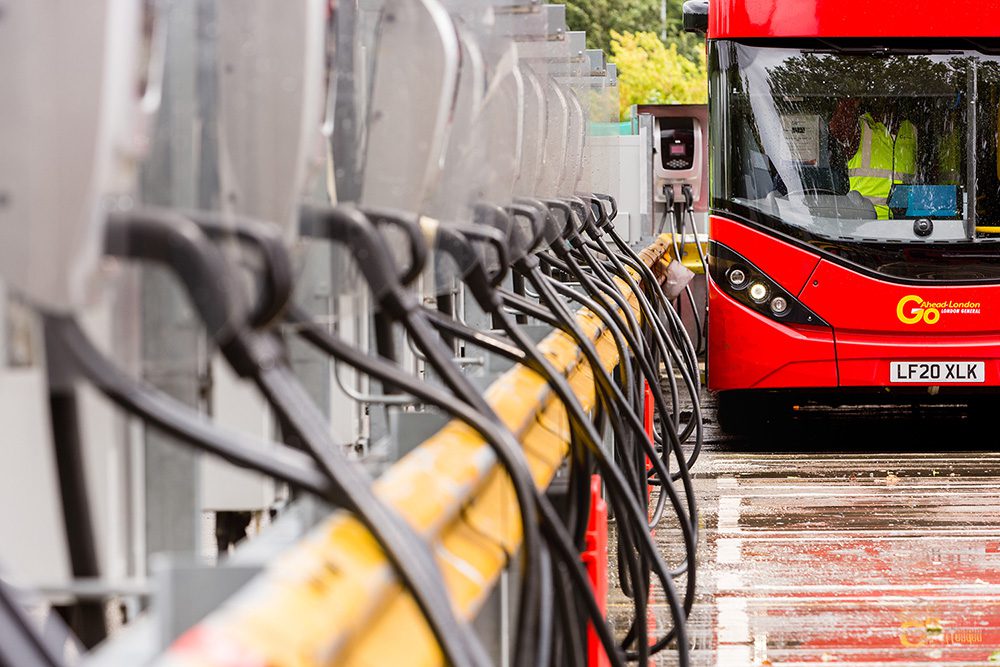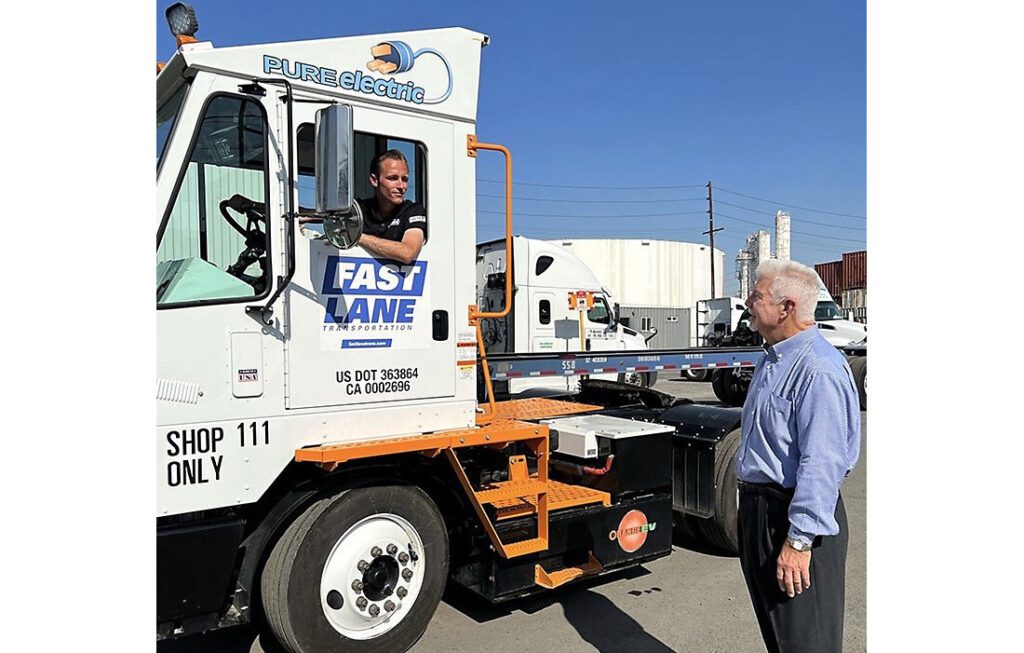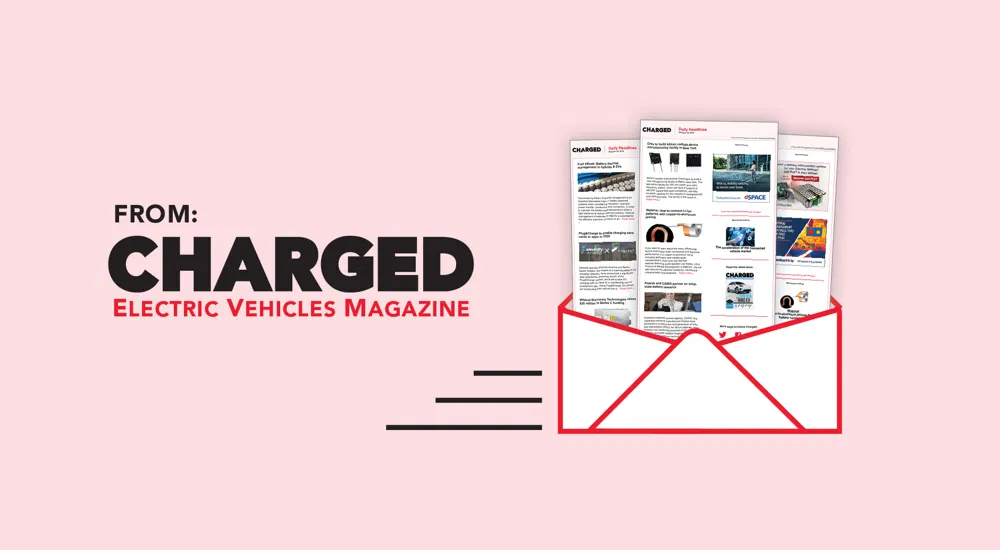Hyundai Motor North America has unveiled the new IONIQ 5, an electric crossover that’s headed to the US this fall. IONIQ 5 is based on Hyundai’s Electric-Global Modular Platform. Its design drew inspiration from Hyundai’s 45 EV concept, which debuted at the 2019 International Motor Show in Frankfurt.
The new crossover is part of Hyundai’s plan to introduce 23 new battery-electric models and sell 1 million EVs worldwide by 2025.
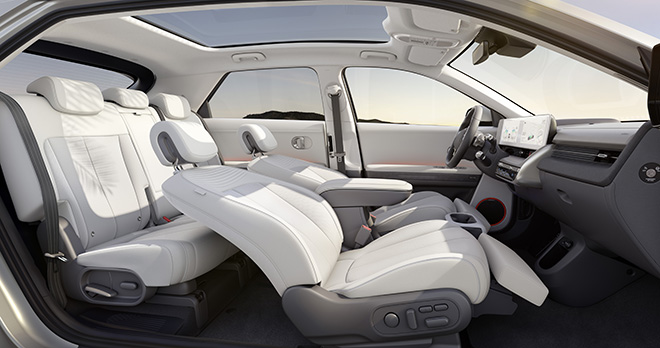
IONIQ 5 has a 77.4 kWh battery pack, and will be available with two powertrain options: the rear-motor version packs 225 hp (168 kW) and 258 ft-lb of torque, and the dual-motor AWD version offers a combined power output of 320 horsepower (74 kW front + 165 kW rear) and 446 ft-lb of torque. An IONIQ 5 with this configuration can go from 0 to 60 in less than 5 seconds.
IONIQ 5’s targeted range is 300 miles for the single-motor variant, 269 miles for the dual-motor SE and SEL trims, and 244 miles for the top-of-the-line Limited AWD model. All configurations have a top speed of 115 mph, and a towing capacity of up to 1,500 pounds.
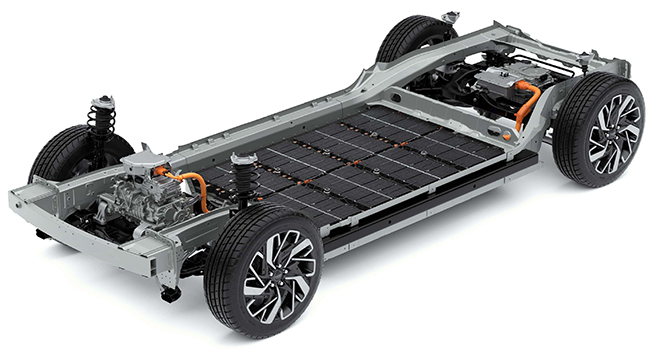
Hyundai’s E-GMP platform can support both 400-volt and 800-volt charging infrastructures, without additional components or adapters. IONIQ 5 has a 10.9 kW on-board charger, and supports DC fast charging at power levels of up to 350 kW. Buyers will receive two years of unlimited 30-minute charging sessions at Electrify America.
A new feature of IONIQ 5 is a vehicle-to-load (V2L) function, which can be used to charge electric bicycles, scooters or camping equipment, or even a stranded EV. The V2L function is enabled using an optional adaptor, and provides 1.9 kW of peak power.
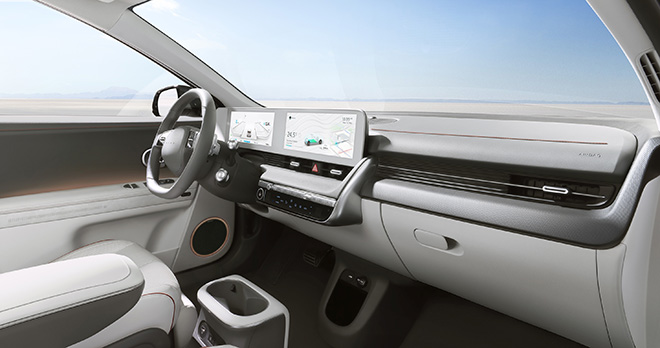
Hyundai’s E-GMP platform is designed to provide a nearly flat floor for maximum passenger and cargo space. There’s also a new separate cooling block structure that helps make the battery pack more compact. IONIQ 5 provides 27.2 cubic feet of cargo space with the rear seats up, or 59.3 cubic feet with the seats folded.
IONIQ 5 features a Head-Up Display (HUD) with Augmented Reality (AR) mode, a 12-inch infotainment touchscreen and a 12-inch digital gauge cluster. It supports Apple CarPlay, Android Auto and Bluetooth Multi-connection, which enables two devices to be paired at the same time.
Hyundai’s SmartSense driver assistance suite includes Highway Driving Assist 2, Smart Cruise Control, Forward Collision-Avoidance Assist, Driver Attention Warning and many more features.
IONIQ 5 is the first Hyundai vehicle to offer over-the-air wireless updates for maps and multimedia software. These updates will be available twice a year at no charge.

The Hyundai Ioniq 5 is slated to go on sale in the UK in the middle of 2021. A soft US release, which will bring the Ioniq 5 to market in about 16 states, is scheduled for the fall of 2021, to be followed by a broader rollout in 2022.
“IONIQ 5 introduces the Hyundai brand to a whole new set of buyers,” said José Muñoz, President and CEO, Hyundai Motor America. “Once behind the steering wheel, they are going to be shocked by the range, power, comfort, interior space and advanced technology.”
Source: Hyundai







